NASA's Psyche mission is due to launch at 10:16 a.m. EDT on Thursday 12 October 2023 on a SpaceX Falcon Heavy rocket from Kennedy Space Center.
If the artist’s impressions are anything to go by, we’re in for spectacular images in August 2029, when NASA’s Psyche spacecraft enters orbit around the asteroid with the same name.
Psyche is the very first space mission to study an M-type (metallic) asteroid, and no one really knows what to expect.
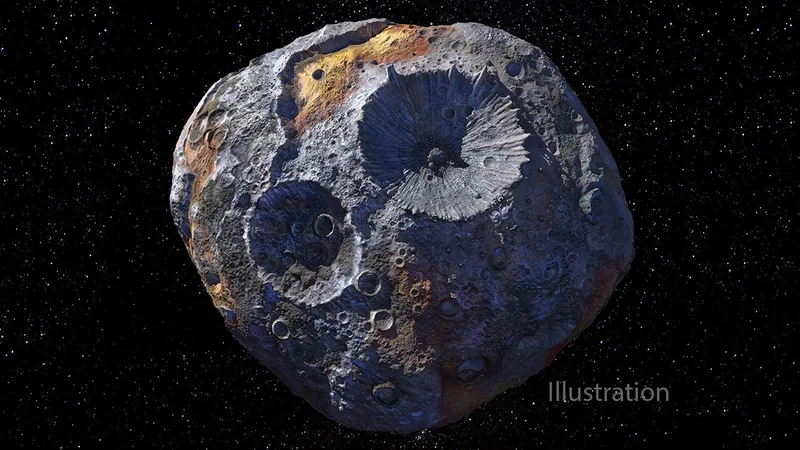
Asteroid 16 Psyche may sport volcanic ‘lava’ plains of pure iron or steep mountains of metal – something that has never before been seen in the Solar System.
The Psyche mission (named after the asteroid, not the other way around!) will reveal the strange object’s nature, composition and evolution, and shed further light on the origin of the Solar System.
"It is our hope that Psyche teaches us about new and unexpected aspects of planet formation processes that have yet to be explored," says co-investigator Bill Bottke of the Southwest Research Institute in Boulder, Colorado.
As for the asteroid itself, "we know it’s metal-rich, but beyond that, its origin is an enigma."

Psyche mission's launch and journey through space
First proposed in 2014, Psyche was selected as a finalist in NASA’s Discovery programme in 2015 and approved in January 2017 as the 14th entry in this series of focused, cost-effective science missions.
A gravity assist fly-by of Mars in 2026, just 500 kilometres above the surface, will give the spacecraft enough energy to reach its target asteroid in the summer of 2029.
The Psyche spacecraft is a roughly cubic spacecraft about the size of a Smart car, built by Maxar Technologies.
The mission is led by Arizona State University and will be operated by NASA’s Jet Propulsion Laboratory in Pasadena.
Two huge arrays of solar panels, with a total span of almost 25 metres and a surface area as large as a tennis court, will provide the power for the science instruments and for the spacecraft’s solar electric propulsion thrusters, which are much more versatile than traditional chemical rocket engines.
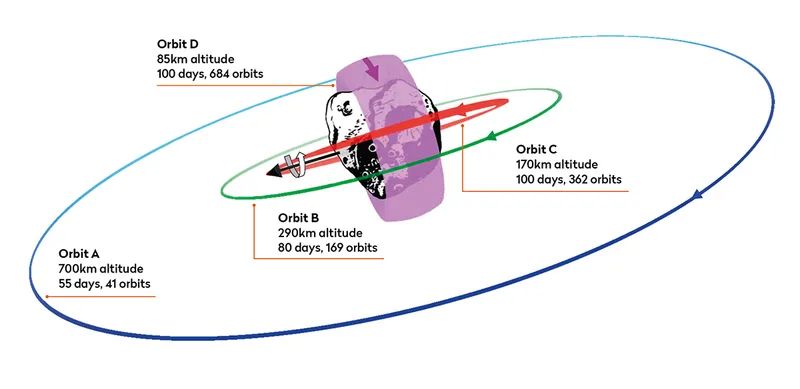
Over a period of 21 months, Psyche will orbit its namesake asteroid at four different altitudes above the enigmatic surface.
The first 55-day phase of the mission (orbit A, at 700 kilometres), focuses on general reconnaissance, mapping and magnetic field studies.
Next, the craft enters orbit B (290 kilometres), to further study the asteroid’s magnetic field and carry out topography measurements for a period of 80 days.
Orbit C (170 kilometres, 100 days) will mainly be used to precisely map the asteroid’s gravitational field, providing information about its interior structure.
Finally, Psyche will lower itself to an altitude of a mere 85 kilometres (orbit D, also 100 days) to determine the chemical composition of the asteroid’s surface.
How Psyche will study the asteroid
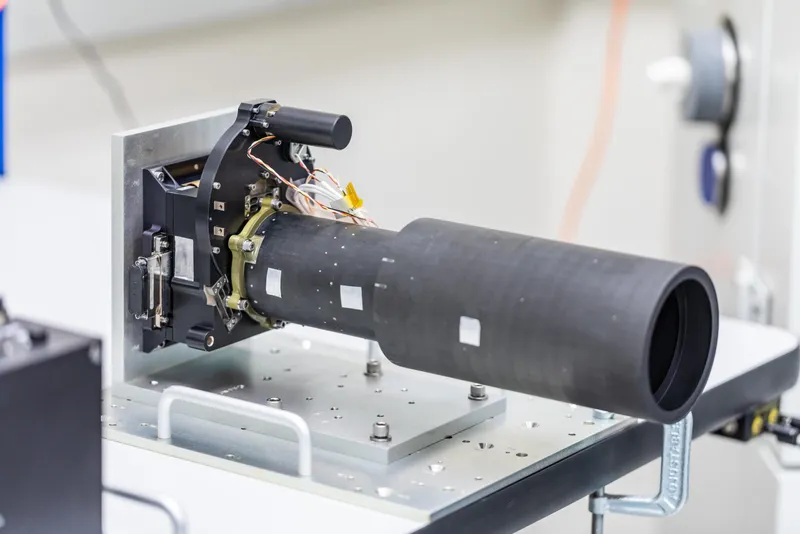
The mission’s multi-spectral imager – two identical cameras with a suite of filters – is going to provide high-resolution images of Psyche’s surface.
It will make the NASA artists' impressions obsolete, although everyone is curious about how realistic they will turn out to have been.
A 2-metre boom carries a set of magnetometers, as well as a gamma-ray and neutron spectrometer, which will measure the abundances of various chemical elements on the asteroid’s surface.
Precise timing of the radio communication with the spacecraft – through its 2-metre-diameter antenna – enables mapping of Psyche’s gravitational field.
Apart from its main science payload, with a total mass of just 30kg, the Psyche mission is also unprecedented in that it is tasked with testing a new method of spacecraft communication, using near-infrared lasers instead of radio waves.
Known as Deep Space Optical Communications (DSOC), this technology demonstration project promises to achieve a substantially higher data rate.
The laser signals from the craft will be collected by the venerable 5-metre Hale Telescope at Palomar Mountain in California. Engineers expect to use this form of laser communication more often in future missions to Mars.
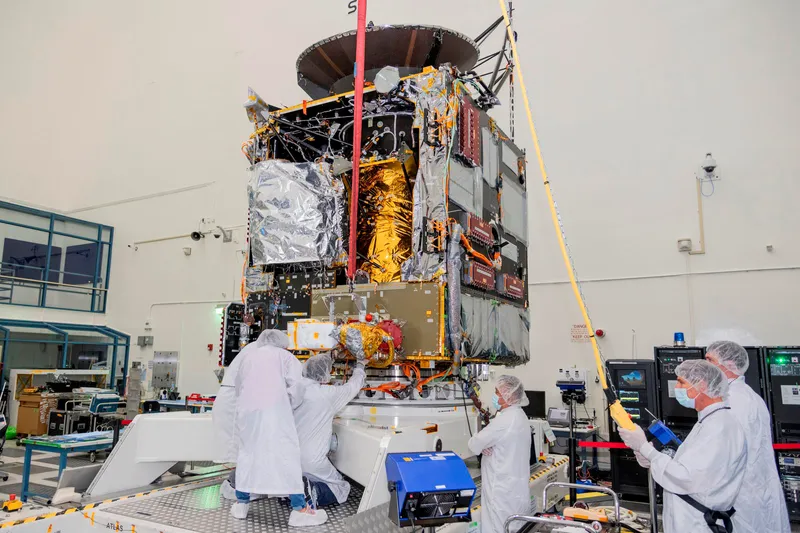
Psyche mission's science goals
Psyche is a vitally important mission in the exploration of our Solar System, and is more or less comparable to NASA’s Dawn mission, which orbited the two largest main belt asteroids Ceres and Vesta between 2011 and 2018.
"This mission differs from Dawn in the sense that Psyche is a different kind of object than has been visited thus far," says Bottke.
While Psyche (like Ceres and Vesta) is likely to be a primordial object, Bottke emphasises that very little is known about the metal-rich asteroid with much certainty.
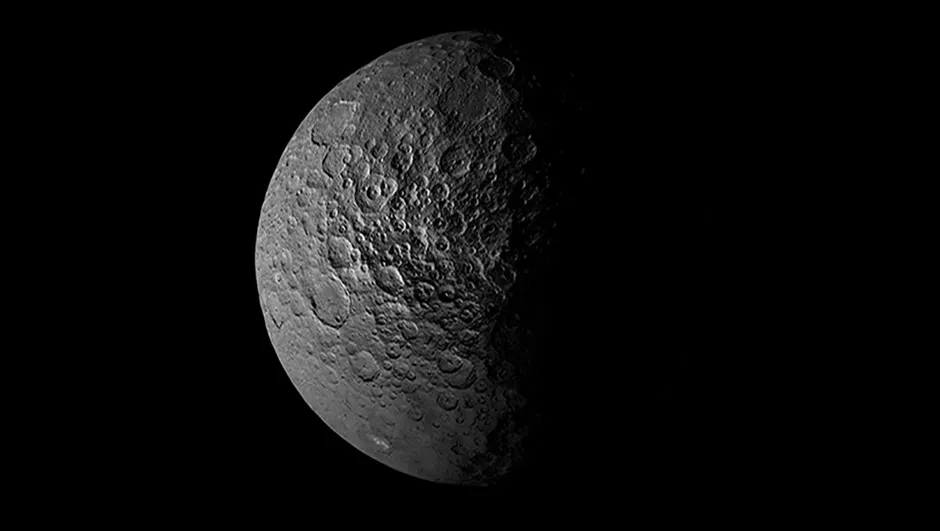
"For example," he says, "it is still an open question whether Psyche formed in the inner or outer Solar System, or whether any of our known meteorites are a good match to its surface."
Scientists are likely to have a lot of answers within a few years. But then again, Psyche may also provide them with new questions and unexpected results.
"Secretly, I am hoping that Psyche is something really strange," says principal investigator Elkins-Tanton.
"Not a core, not a recognisable kind of unmelted meteoritic material. Maybe it’s a metal-rich remnant of the material that was near the Sun in the earliest history of the Solar System. My secret hope is to be really surprised!"
Watch the Psyche mission launch live
This article originally appeared in the October 2023 issue of BBC Sky at Night Magazine.
